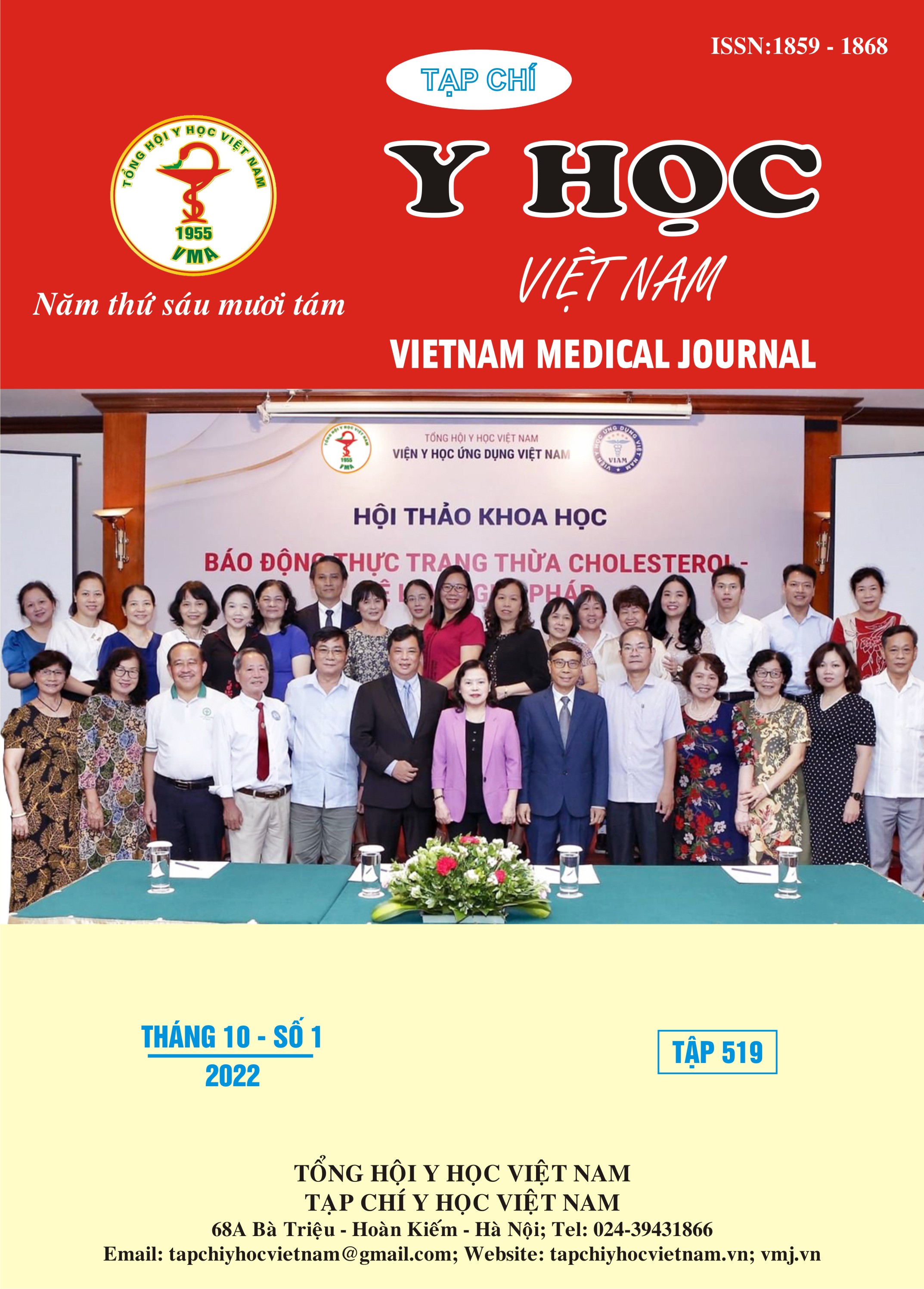INTRACRANIAL ARTERIAL STENOSIS ON 3.0 TESLA MAGNETIC RESONANCE IMAGING AT BACH MAI HOSPITAL
Main Article Content
Abstract
Objective: To describe the status of intracranial arterial stenosis on magnetic resonance imaging 3.0 Tesla at Bach Mai hospital. Methods: A descriptive, prospective, study was performed on 104 patients, who had been detected intracranial arterial stenosis images on magnetic resonance imaging 3T from 6/2021 to 6/2022 at Bach Mai hospital, Hanoi, Vietnam. Result: 81 lesions in anterior circulatory system, 31 lesions in posterior circulatory system, 8 lesions in both of these systems. Among them, 40 lesions in Internal Carotid Artery (ICA), 47 lesions in middle cerebral artery (MCA), 4 lesions in anterior cerebral artery (ACA), 12 lesions in basilar artery (BA), 16 lesions in vertebral artery (VA), and 12 lesions in posterior cerebral artery (PCA). The stenosis frequency on only one side is higher (75% - 95,7%) and the frequency on both of sides has lower rates (4.3% - 25%). ICA, MCA, BA, PCA is often narrowed a position or a length (77.5% - 91.7%). A high rate of moderate stenosis status in ICA, BA (42.5%, 41.7%), severe stenosis status in MCA (40,4%), near occlusion in VA, PCA (37.5%, 50%), occlusion in BA, ACA (2/4: 50%; 5/12: 41.7%). There is a statistically significant difference between the number of positions and the side of the lesions in ICA, p = 0.004. The highest mean stenosis ratio in VA: 84.4 ± 19%, the lowest ratio in BA: 72.1 ± 19%. Conclusions: 3.0 Tesla Magnetic resonance imaging provide the overview of the intracranial arterial system, contemporaneously, its potentiality evaluate the characteristics and the distribution of intracranial arterial stenosis.
Article Details
Keywords
intracranial arterial stenosis, intracranial arterial occlusion, magnetic resonance imaging 3.0 Tesla, dyslipidemia
References
2. Edelstein WA, Glover GH, Hardy CJ, Redington RW. The intrinsic signal-to-noise ratio in NMR imaging. Magnetic resonance in medicine. Aug (1986);3(4):604-18. Doi:10.1002/ mrm. 1910030413
3. Lê Đình Toàn. Nghiên cứu đặc điểm lâm sàng, hình ảnh vữa xơ hẹp tắc động mạch trong sọ trên phim cộng hưởng từ 3.0 Tesla ở bệnh nhân nhồi máu não. Viện nghiên cứu khoa học y dược lâm sàng 108; (2016).
4. Owen B. Samuels, Gregg J et al. A Standardized Method for Measuring Intracranial Arterial Stenosis. AJNR Am J Neuroradiol. (2000);21(4):643 -646.
5. Sadikin C, Teng MM, Chen TY, et al. The current role of 1.5T non-contrast 3D time-of-flight magnetic resonance angiography to detect intracranial steno-occlusive disease. Journal of the Formosan Medical Association = Taiwan yi zhi. Sep (2007);106(9):691-9. Doi:10.1016/s0929-6646(08)60030-3
6. Phạm Thị Ngọc Quyên và cộng sự. Đặc điểm tổn thương thanh mạch trên cộng hưởng từ độ phân giải cao ở bệnh nhân đột quỵ thiếu máu cục bộ có hẹp động mạch nội sọ. Y Học Tp Hồ Chí Minh. (2021);25(2):62- 68.
7. Marquardt L, Kuker W, Chandratheva A, Geraghty O, Rothwell PM. Incidence and prognosis of > or = 50% symptomatic vertebral or basilar artery stenosis: prospective population-based study. Brain : a journal of neurology. Apr (2009);132(Pt 4):982-8. Doi:10.1093/ brain/awp026
8. Holmstedt CA, Turan TN, Chimowitz MI. Atherosclerotic intracranial arterial stenosis: risk factors, diagnosis, and treatment. The Lancet Neurology. Nov (2013);12(11):1106-14. Doi:10.1016/s1474-4422(13)70195-9
9. Radwan MEM, Aboshaera KO. Magnetic resonance angiography in evaluation of acute intracranial steno-occlusive arterial disease. The Egyptian Journal of Radiology and Nuclear Medicine. 2016/09/01/ (2016);47(3):903-908. Doi:https://doi.org/10.1016/j.ejrnm.2016.05.023


